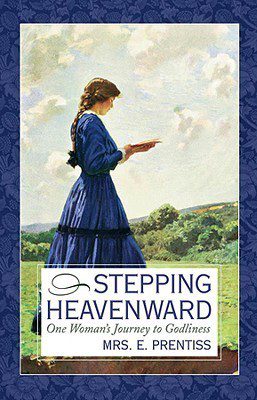Title: Stepping Heavenward
Author: Elizabeth Payson Prentiss
First published January 1, 1880
352 pages, Paperback
ISBN: 9781577483427 (ISBN10: 1577483421)
Rating: 4.23
Overview
“Stepping Heavenward” is a timeless coming-of-age novel that chronicles the journey of Katherine, a young Christian girl. Through her journal entries, we witness her growth from a sixteen-year-old girl to a woman who navigates the challenges of courtship, marriage, and motherhood.
The story is an inspiration to young women who face similar struggles in their own lives, and the lessons learned by Katherine will resonate with readers for generations to come. This classic tale is a must-read for anyone seeking to find their way in life and to strengthen their faith in God.
About the Author
Elizabeth Prentiss was an American writer who started penning stories from a young age. She was born in Portland, Maine in 1818, and her father was a preacher who spearheaded the religious revival of the 19th century.
Prentiss is known for her notable contribution to the world of music, having composed the hymn “More Love to Thee, O Christ.” Although she passed away in Vermont in 1878, her literary works and music continue to inspire people to this day.
Editoral Review
Stepping Heavenward, written by Elizabeth Payson Prentiss and first published in 1880, is a classic novel that explores the themes of faith, personal growth, and the challenges of womanhood in the 19th century. Prentiss was an American author and poet who wrote several books, but Stepping Heavenward remains her most popular work, considered a classic of Christian literature.
The novel is written in the form of a diary, chronicling the life of a young woman named Katy as she grows from a girl to a wife and mother. Set in the mid-1800s, the book provides a glimpse into the world of a middle-class family in New England, with its social conventions and religious beliefs.
Katy’s journey is marked by her struggles with self-doubt, insecurity, and the desire to find meaning and purpose in life.
The novel’s strength lies in its portrayal of Katy’s character development, which is gradual and realistic. Prentiss depicts Katy as a flawed but relatable protagonist, who experiences a wide range of emotions and undergoes a spiritual transformation.
Katy’s struggles with marriage, motherhood, and her relationship with God are all handled with sensitivity and nuance, making her a believable and sympathetic character.
The book’s themes are timeless, as they deal with the universal human experience of self-discovery and growth. Prentiss’s writing is elegant and poetic, with vivid descriptions of nature and the inner workings of Katy’s mind.
The pacing of the novel is slow but steady, allowing the reader to fully immerse themselves in Katy’s world.
One of the book’s limitations is its heavy religious overtones, which may not appeal to all readers. The novel also lacks a strong plot, as it is primarily a character study rather than a plot-driven narrative.
However, these limitations are outweighed by the book’s strengths, including its compelling protagonist and insightful exploration of faith and womanhood.
Overall, Stepping Heavenward is a beautifully written and thought-provoking novel that will resonate with readers who enjoy character-driven stories and Christian literature. It is a timeless classic that continues to inspire readers over a century after its initial publication.
Therefore, I would highly recommend this book to readers who are interested in exploring the themes of faith, personal growth, and the challenges of womanhood in the 19th century. I would give this book a rating of 4.5 out of 5 stars.



